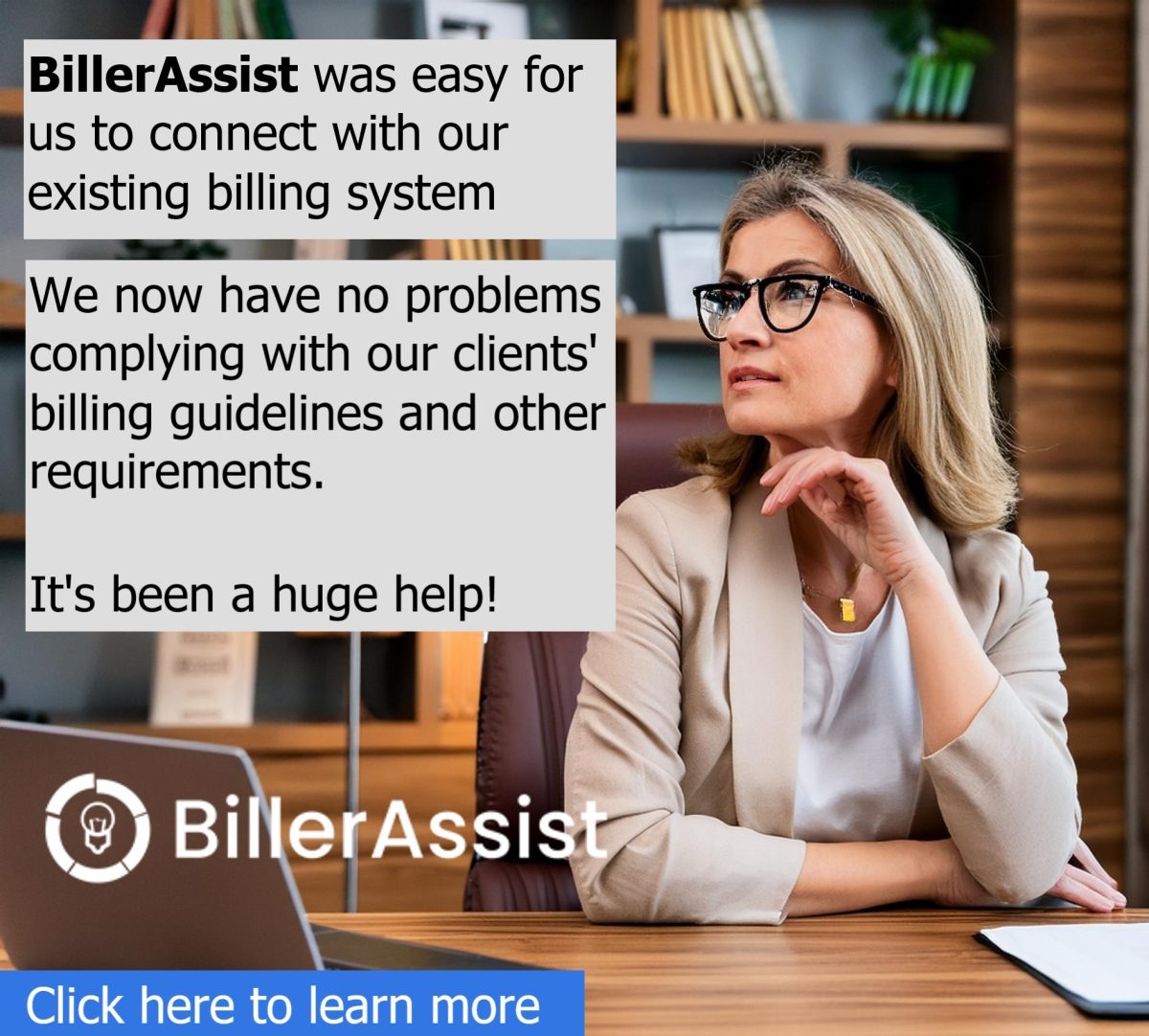AI Offers Solutions to Improve Law Firm Profitability
Implementations of automation, artificial intelligence, and machine learning technologies are becoming more common and easy to use.
From e-commerce and logistics to self-driving cars, the technology is appearing everywhere. In fact, venture capital funding in this space has more than tripled in recent years.
These technologies also allow law firms to optimize and improve their operational efficiencies.
From bill processing and review, to improving realization and collection rates, to efficiently managing local and outside counsel, cutting-edge solutions have revolutionized almost every aspect of an attorney’s non-billable work and responsibilities, while decreasing overhead and increasing profits.
Current Billing Practices Can Be Improved
Non-billable tasks, late invoicing, and poor time tracking are all issues that the law practice and advisory podcast The Un-Billable Hour point to as major causes of revenue loss.
Moreover, collection and realization rates further contribute to a trend of diminishing revenues at larger firms according to a recent report on the State of the Legal Market released by Georgetown Law. Additionally, for smaller firms, a Clio Legal Trends Report estimates that out of a standard eight-hour workday, firms are only averaging about 1.5 hours of billable work. That’s a staggering six hours or more of unbillable work every day.
The kneejerk response to falling revenues for most firms is to raise hourly rates.
However, according to that same Georgetown Law Report, rate increases have only led clients to pay less of the hours billed at the higher rate. This in turn has caused realization rates to plummet, effectively invalidating rate increase as a viable solution.
This should come as no surprise, as it will always be difficult to get buyers to pay more for the same thing they were getting for less.
The industry-wide revenue challenges are especially stark, because they have persisted despite increases to the standard hourly rate and the recovery of the economy following the recent financial upheavals.
With revenue down and rate increases ultimately unhelpful, it’s time to look elsewhere for solutions. The over six hours of unbillable time is the most obvious place to start.
Much of this time is dominated by billing review – i.e., the time it takes for lawyers to review their billing for errors before submitting invoices for payment.
In fact, the ABA Model Rules for attorney ethics require lawyers ensure their bills are reasonable. Attorneys must exercise “billing judgment," and “make a good-faith effort" to exclude charges and expenses “that are excessive, redundant, or otherwise unnecessary."
Beyond ethical requirements for billing review, accurate bill review has the added benefit of reducing billing disputes with clients over mistakes and inconsistencies. Clients will often refuse to pay bills they believe are inaccurate or unreasonable, further punishing revenue rates. The only problem is that pouring over extensive billing information is extremely time-consuming.
Major, Lindsey & Africa offer a solution in their recent Industry Outlook report. The law firm consulting firm suggests bolstering productivity and efficiency via the expanded use of technological solutions. This would allow for more time to be spent on billable tasks, thereby increasing profits.
Automation Can Increase Revenue
Billing is a vital part of the legal profession. As many of the tasks lawyers perform are not as tangible as “this amount of money for this object,” the nuances in legal billing require a level of precision that can become grueling, month in and month out.
These effects are amplified by clients who require the use of electronic invoice submissions, most often using UTBMS codes in LEDES formatted invoices.
The electronic billing framework created by Uniform Task-Based Management System (UTBMS) was designed to streamline the billing process, particularly for clients.
The Legal Electronic Data Exchange Standard Oversight Committee (LOC makes use of specific UTBMS codes for specific tasks and expenses in order to organize and categorize those tasks and expenses across all legal billing. This not only makes billing review simpler, but also allows for transparent comparison and contrast from one bill to the next, using LEDES formatsfor UTBMS-coded invoices.
Unfortunately, what is a boon for the client often comes as a burden for law firms who have to contend with the inefficiencies of time-consuming manual code selection for every time or expense entry they add. Moreover, human error mistakes in coding and billing rules compliance only serve to further strain realization rates as clients frequently will not pay non-compliant bills and charges.
This leaves two options: rush out invoices that may or may not have mistakes (and then not receive payment for them if they do), or spend even more time on billing procedures and lose out on additional billable time, all while slowing billing. Slower billing means slower payment.
Conversely, the reverse is theoretically also true. Faster billing should mean faster payment and stronger cash flow.
In fact, Thomson Reuters Legal Management Trends reports that it is possible to speed up the billing process without sacrificing accuracy using automation.
Removing the human error element has been shown to cut down on billing disputes and improve realization rates. Additionally, automation is notably faster than manual processes, solving both problems at once.
Applications exist right now that can help relieve the burden of manual UTBMS code selection and LEDES formatting. Some of them will even interface with a firm’s existing billing software systems for seamless adoption and integration.
According to Law Technology Today, implementing these legal tech tools can help improve not just the billing process, but also management efforts firm-wide.
The publication provides the following list of features to look for when trying to decide which application to put into service at your practice:
- Time and expense entries
- Client intake processing
- Budgeting
- UTBMS/LEDES coding
- Invoice submission
- Invoice format conversions
- Document Review
Conclusion
Raising hourly rates is not a long-term solution to the trend of falling legal revenue. Perhaps it is time to give smarter billing a chance.
It is difficult to argue against the merits of tools that both increase accuracy and decrease the time it takes to complete important but unbillable tasks.
Automation, making use of artificial intelligence and machine learning, checks both those boxes all while prioritizing transparency for law firms and clients alike. Staying ahead of this revolutionary curve is already possible with existing apps.





